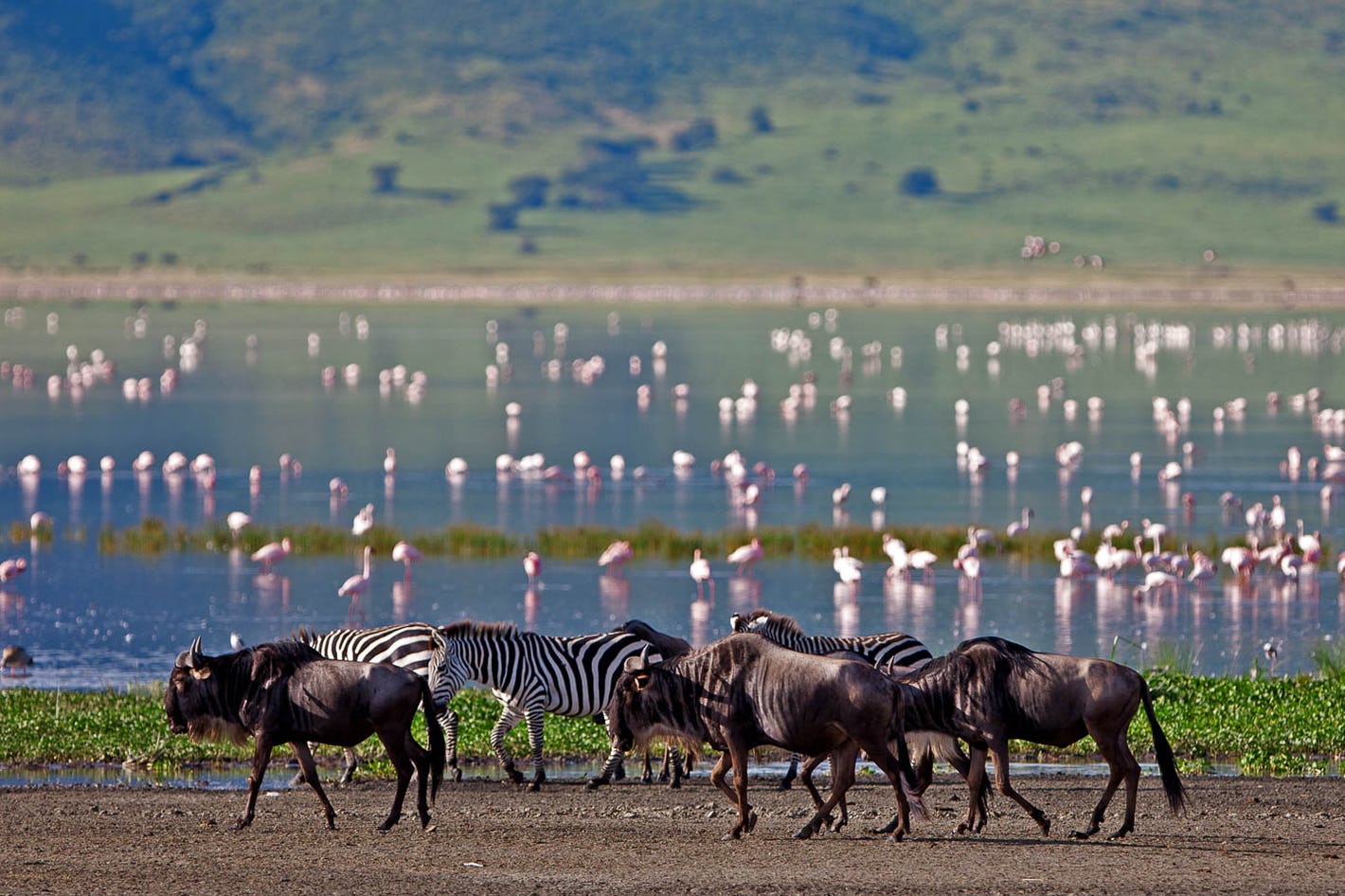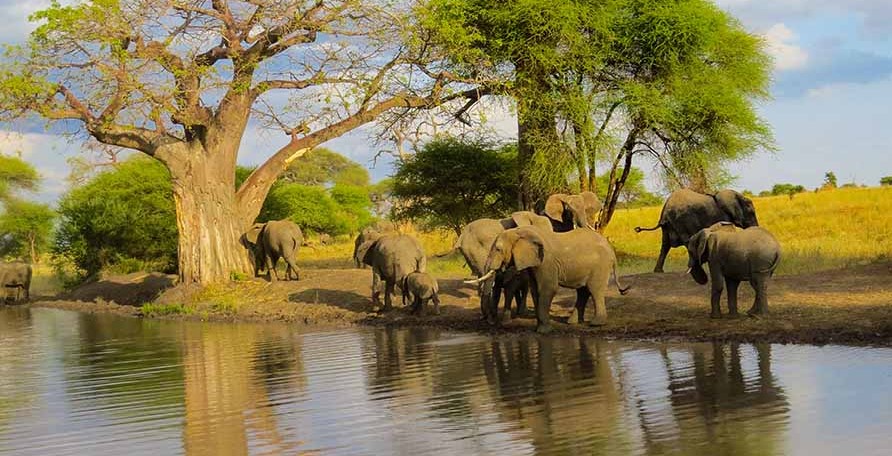
Best Photography Spots in Tanzania’s National Parks
Best Photography Spots in Tanzania’s National Parks. Tanzania, with its diverse landscapes and thriving wildlife, offers some of the best photography opportunities in Africa. Whether you’re chasing the perfect shot of a lion on the prowl or capturing the vast plains dotted with acacia trees, Tanzania’s national parks deliver stunning photo moments at every turn. From the iconic Serengeti to the hidden gems of Ruaha, each park presents a unique canvas for photographers. In this post, we will delve deep into the top photography spots across Tanzania’s national parks, offering insights and tips for capturing breathtaking images that reflect the soul of this remarkable country.

-
Serengeti National Park: The Land of Endless Plains
The Serengeti is undoubtedly one of the most famous national parks in the world, known for its annual migration and seemingly endless savannah. For photographers, Serengeti provides endless opportunities to capture the essence of Africa’s wild beauty.
One of the best times to photograph the Serengeti is during the Great Migration. From June to October, over a million wildebeest, zebras, and gazelles traverse the park in search of greener pastures. The dramatic river crossings, particularly at the Mara River, are a favorite among photographers for their intense and unpredictable nature, often accompanied by lurking predators such as crocodiles. Position yourself along the riverbanks to capture the raw energy of the migration in action.
-
Ngorongoro Crater: A Photographer’s Haven
Another must-visit spot for photographers is the Ngorongoro Crater, a UNESCO World Heritage Site and the world’s largest inactive volcanic caldera. The crater is a haven for wildlife photography due to its enclosed nature, which concentrates large numbers of animals within a relatively small area.
The dense population of big game animals—such as lions, elephants, and rhinos—offers the rare opportunity to capture multiple species in a single frame. One of the most iconic shots in the Ngorongoro Crater is of the rhinos grazing on the grassy plains with the towering walls of the crater in the background. These majestic creatures are becoming increasingly rare, and the crater is one of the few places in Tanzania where you can still photograph them in the wild.
-
Tarangire National Park: Baobabs and Elephants
Tarangire National Park may be less famous than the Serengeti or Ngorongoro, but it offers equally stunning photography opportunities, particularly for those interested in landscape photography. Known for its giant baobab trees and large herds of elephants, Tarangire’s distinctive scenery sets it apart from other parks in Tanzania.
The best time to visit Tarangire is during the dry season, from July to October, when animals congregate around the shrinking water sources. You’ll have the chance to photograph large numbers of elephants—sometimes up to 300 in a single group—along the Tarangire River, which becomes a lifeline during the dry months. With the massive baobabs providing a unique and dramatic backdrop, these shots often have a timeless quality to them.
For a perfect composition, consider framing the elephants with the baobabs in the background or use the trees themselves as the subject. Their large, gnarled trunks and spindly branches are incredibly photogenic, particularly against the soft hues of the setting sun. This park also offers a quieter, more intimate experience compared to the Serengeti, allowing photographers to take their time setting up for the perfect shot.

-
Lake Manyara National Park: Flamingos and Tree-Climbing Lions
Located at the base of the Great Rift Valley, Lake Manyara National Park is a small but incredibly diverse park that is a hidden gem for wildlife photography. The park’s most famous residents are its flamingos, which create a stunning pink ribbon around the lake’s edge during the wet season. Wide-angle shots of the lake with the pink flamingos stretching across the horizon create beautiful compositions.
Moreover, Lake Manyara is known for its rare tree-climbing lions, a unique phenomenon that occurs in only a few places in Africa. Photographing these elusive lions perched high in the acacia trees provides a rare and exciting photo opportunity. A long zoom lens is essential for capturing these animals without disturbing them, while a high vantage point allows for dynamic angles.
In addition to flamingos and lions, the park is home to a wide variety of bird species, which makes it a paradise for bird photographers. The lush groundwater forests, which surround much of the lake, offer excellent opportunities for capturing birds in flight or resting on branches against the vibrant green backdrop.
-
Ruaha National Park: Tanzania’s Best-Kept Secret
For those looking for a more remote and less touristy photography experience, Ruaha National Park is an excellent choice. This park is Tanzania’s largest but remains relatively untouched by mass tourism, making it a perfect destination for photographers who prefer to explore off the beaten path.
Ruaha is home to an incredible diversity of wildlife, including large populations of elephants, lions, and leopards, which can be photographed against the backdrop of rugged mountains and wide-open plains. The Great Ruaha River provides a focal point for much of the park’s wildlife activity, especially during the dry season. Here, you can capture dramatic shots of elephants cooling off in the water or lions lounging on the riverbanks.
The park’s varied landscapes—from savannahs to miombo woodlands—create dynamic and ever-changing backgrounds for your photos. One of the best times to visit Ruaha is during sunset, when the sky turns into a tapestry of warm colors, casting a golden glow over the park. Photographers can use this soft light to capture breathtaking silhouettes of animals against the backdrop of the setting sun.
-
Selous Game Reserve (Nyerere National Park): A Photographer’s Dream
Finally, for those seeking a blend of wildlife and wilderness, the Selous Game Reserve, recently renamed Nyerere National Park, offers some of Tanzania’s wildest photography experiences. Covering over 50,000 square kilometers, this park is one of the largest protected areas in Africa and provides a truly untouched wilderness experience.
One of the most unique photography experiences in Selous is capturing the wildlife along the Rufiji River, which winds its way through the park. From the water, you can photograph hippos, crocodiles, and a variety of bird species, such as African fish eagles, from a different perspective. Boat safaris offer a chance to shoot from a low angle, providing dynamic compositions that are different from traditional game drives.
Selous is also home to the endangered African wild dogs, which are particularly photogenic with their striking coat patterns. Catching a pack of wild dogs on the hunt or at play offers a rare opportunity to photograph one of Africa’s most elusive predators.

Conclusion
Tanzania’s national parks are a paradise for photographers, offering a wide range of landscapes, wildlife, and unique opportunities to capture stunning images. From the vast plains of the Serengeti to the crater floor of Ngorongoro and the remote beauty of Ruaha, every park has its own character and charm. For photographers, planning your trip around key wildlife events like the Great Migration or visiting during the golden hours of sunrise and sunset will ensure that you capture the beauty of Tanzania in its full glory. Whether you’re an amateur with a passion for wildlife or a seasoned professional seeking the perfect shot, Tanzania’s national parks are sure to exceed your photographic expectations.
Related Posts;






